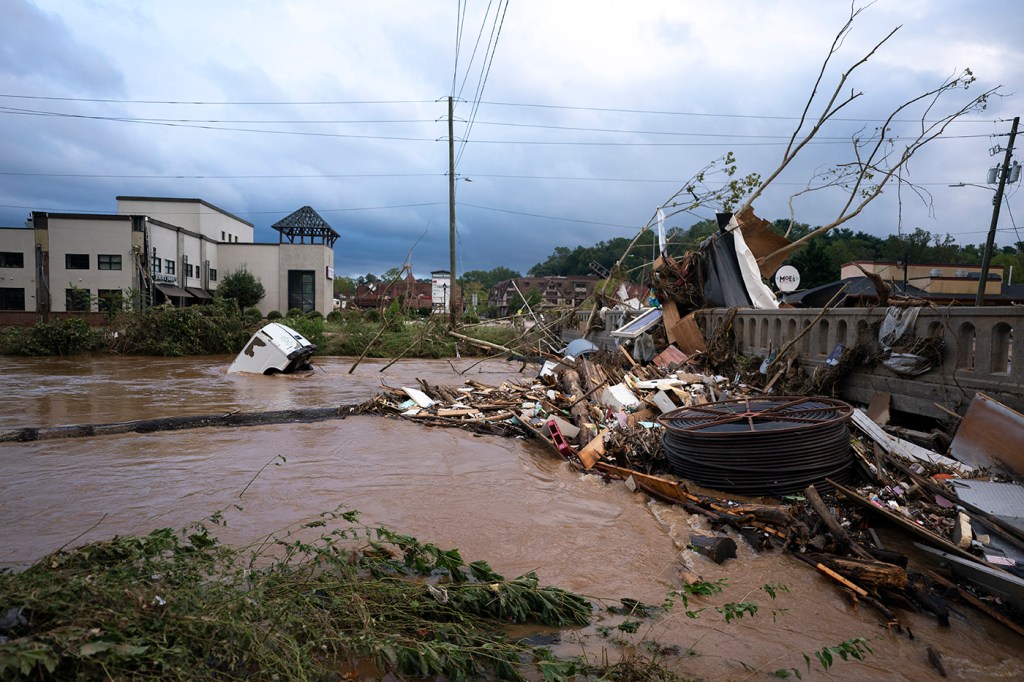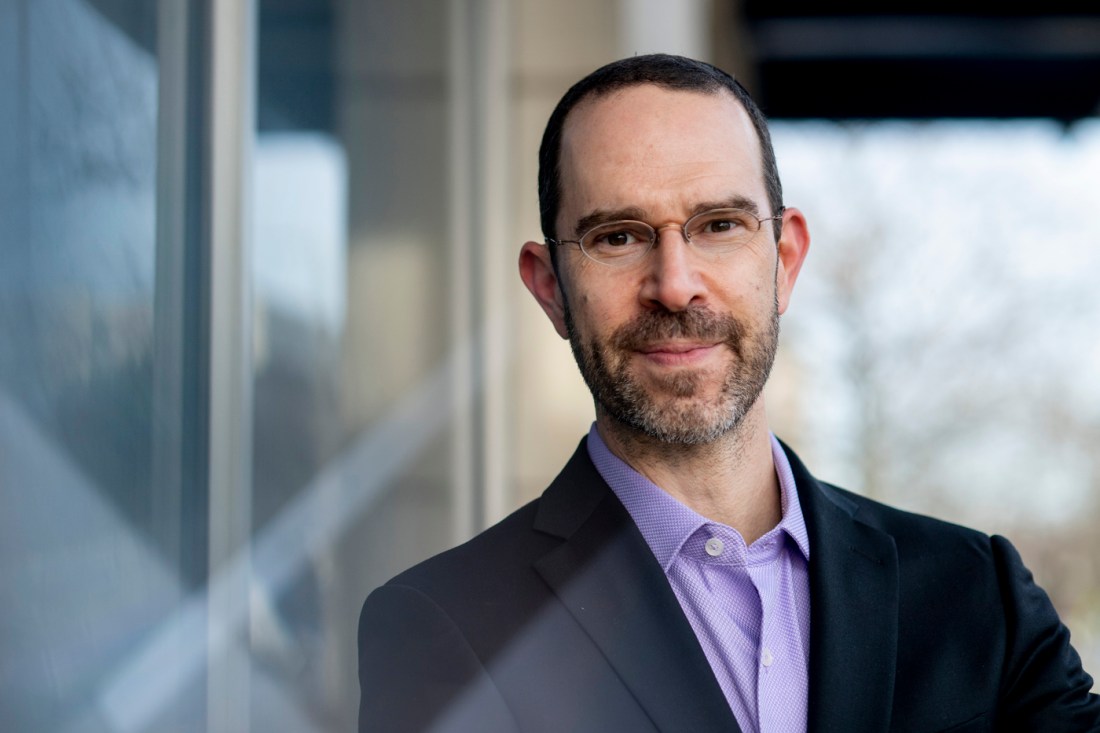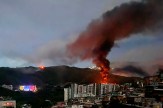Hurricane Helene devastates inland areas of North Carolina. Expect more damage more frequently, warns Northeastern researcher
“These inland hazards are going to be much more common in the future,” says Northeastern professor Daniel Aldrich.

The damage caused by Hurricane Helene is proof that the U.S. must adapt building and insurance practices to a new reality as these natural hazards become normalized, says Daniel Aldrich, a Northeastern University researcher who serves as co-director of the Global Resilience Institute.
At least 95 people in six states have died in the wake of the Category 4 hurricane, which struck Florida’s Big Bend region on Thursday before unleashing days of flooding in the Southeast.
Thirty-six lives have been claimed in North Carolina — including 30 in Buncombe County, serving the mountain city of Asheville, where about 600 missing person reports have been filed online. North Carolina was hit with the worst flooding in 100 years, including one community near Asheville in the western part of the state that was pounded with more than 2 feet of rain.
“Most people think about hurricanes as coastal problems — as opposed to what happens to inland communities,” Aldrich says in reference to Asheville. “These inland hazards are going to be much more common in the future.”
Upcoming research led by Aldrich reveals that disastrous events — including storms, floods, coastal erosion and wildfires — are happening with more regularity.

“We like to think that this happens every few months or even years,” says Aldrich, a professor of political science and public policy who has published five books and directs Northeastern’s Global Resilience Studies program. “But we have empirical evidence showing that over the last two decades, the time period between major shocks is shrinking. That means the government has less capacity to deal with these kinds of problems and there are fewer resources and volunteer workers available.”
Aldrich has been working with Sen. Laphonza Butler (D-California) on the “Investing in Community Resilience Act of 2024,” a bill designed to reduce the financial burden of natural events on local communities, enhance individual and community preparedness, and promote participation in federally-supported resilience programs.
“It matters because most of the money that we spend after a natural hazard is to rebuild as was,” says Aldrich, who spoke Monday with Northeastern Global News about the issues of preparedness and recovery. “What are the things on the ground that we should be thinking about ahead of time — before the next flood, before the next fire — that will make communities safer?
“We have a lot of work to do before the next round of natural hazards. Because this is certainly not going to be the last one we’ll be facing.”
People in North Carolina were taken by surprise. How should communities be thinking of these nature-driven events?
So many communities did not expect that it was even possible they would see this much water in such a short period of time. It wasn’t something they thought about. It wasn’t in the historical record. Recently their insurance companies weren’t thinking about it.
But the reality is huge proportions of our country, both coastal and mountain, are much more at risk from these natural hazards caused by climate change and extreme weather events. So the very environment in which these floods and fires and heat waves are generated has changed.
The maps that people — and probably their insurance companies — have in their heads are quite outdated. And now what we are seeing in North Carolina is an essentially complete blockage of all infrastructure because of rockslides, mudslides and washouts. Infrastructure that planners and local communities thought would be fine is all gone, and the recovery processes are going to take years.
Why do you refer to these events as “natural hazards” rather than “natural disasters?”
As a colleague said many years ago, the only reason these are disasters for us is because we have chosen to build in environments that are in close contact with these hazards. We build communities in harm’s way and so we call them natural hazards to reflect that.
What role will insurance companies play in the recovery?
The vast majority of victims of these events that we studied around the world do not have insurance. In New Orleans, I believe, only one in three homeowners had insurance available; in Kobe, Japan, where there was a massive earthquake, I think only about a quarter of people had the proper insurance against earthquakes and fires. I would hazard a guess that the vast majority of people living in North Carolina did not have any kind of flood insurance.
Which would mean that we’re looking at potentially thousands of households that will have no private-sector coverage but will require some kind of coverage from FEMA [Federal Emergency Management Agency] and the Small Business Administration.
How might the insurance industry be revised to deal with these new threats?
The insurance market has collapsed in places like Florida and California. I would predict the same thing is going to happen in these North Carolina communities, where the local insurance brokers are going to be hard-pressed to pay out these claims. And just like we saw after Katrina [the 2005 hurricane that overwhelmed New Orleans], when a number of the local firms went bankrupt, I would wager here we’re going to see the same thing.
Perhaps the most useful solution will be trying to move from privately held insurance to publicly held insurance. But that’s going to be a challenge.
Some people say that we should be raising premiums so that the premium reflects the risk. If the insurance rates go up high enough, then future builders at least will think through whether it is worth having that view of the ocean or the river.
How should community planners prepare in advance for future natural hazards?
In some of these communities, that process of recovery and planning should push us to think: How are we going to build a society that is able to handle these kinds of shocks in the future? What do we need to take seriously, in terms of investments, to move away from a society that unfortunately responds by rebuilding as was?






